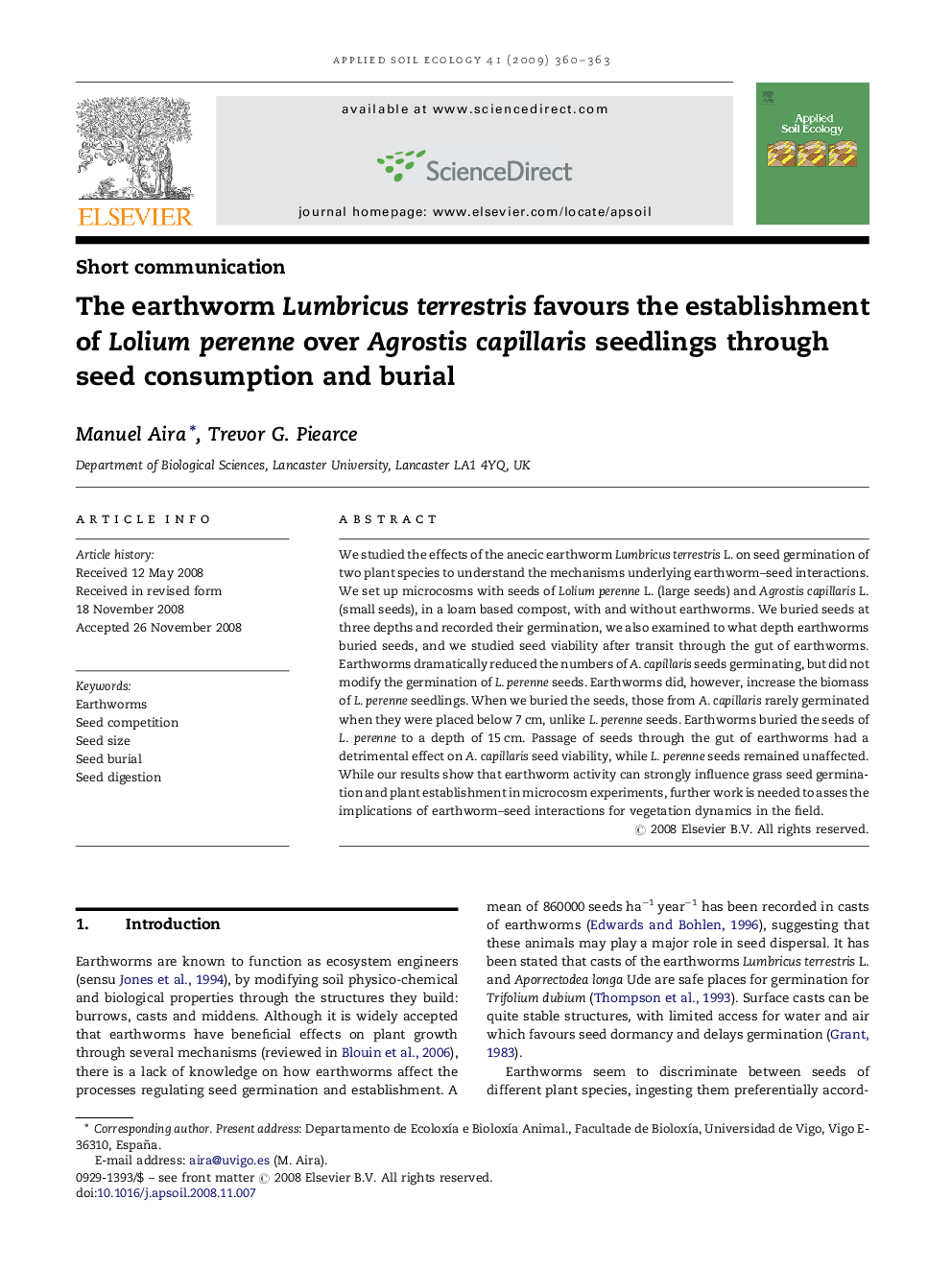| Article ID | Journal | Published Year | Pages | File Type |
|---|---|---|---|---|
| 4382970 | Applied Soil Ecology | 2009 | 4 Pages |
We studied the effects of the anecic earthworm Lumbricus terrestris L. on seed germination of two plant species to understand the mechanisms underlying earthworm–seed interactions. We set up microcosms with seeds of Lolium perenne L. (large seeds) and Agrostis capillaris L. (small seeds), in a loam based compost, with and without earthworms. We buried seeds at three depths and recorded their germination, we also examined to what depth earthworms buried seeds, and we studied seed viability after transit through the gut of earthworms. Earthworms dramatically reduced the numbers of A. capillaris seeds germinating, but did not modify the germination of L. perenne seeds. Earthworms did, however, increase the biomass of L. perenne seedlings. When we buried the seeds, those from A. capillaris rarely germinated when they were placed below 7 cm, unlike L. perenne seeds. Earthworms buried the seeds of L. perenne to a depth of 15 cm. Passage of seeds through the gut of earthworms had a detrimental effect on A. capillaris seed viability, while L. perenne seeds remained unaffected. While our results show that earthworm activity can strongly influence grass seed germination and plant establishment in microcosm experiments, further work is needed to asses the implications of earthworm–seed interactions for vegetation dynamics in the field.
